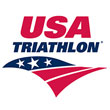8 Questions About Multisport
Do I really need a triathlon bike for triathlons?
Many new competitors start out on a road bike. You can ride on a mountain bike if you choose. It certainly wouldn’t hurt to invest in a road bike or triathlon bike if you plan to be in the sport for a while. If you plan to purchase a bike, a proper fit goes a long way toward making sure you’re comfortable on the bike and can go as fast as possible. Be sure to get a professional bike fitting at your local bike shop.
I’m worried about the swim. What can I do to make it through?
Ask most beginner triathletes which discipline they’re most concerned about, and they’ll tell you the same thing, “the swim.” The best way to make it through the swim is to be prepared. If you train in a pool, be sure to hit the open water for at least a couple training sessions. Join a group swim or bring a friend. Practice sighting, wetsuit stripping, swimming at race pace and swimming with a swim cap on because you’ll have to wear one for races. In the pool, you can simulate open water by practicing turns without using the wall or touching the bottom.
What’s the best thing to eat before my race?
This varies from person to person, but the one reverberating piece of advice is that you should never try something new on race day (this also includes trying brand new shoes or other gear for the first time). Just because you picked up a hyped new energy bar at the expo does not mean you should try it for the first time on race day. Experiment in training to see what types of food work best for your body. Eat and drink those tried and true foods and beverages on race day.
Will I be disqualified if I use fins, a snorkel, grab onto the side of a kayak, etc.?
The answers to these questions and more, can be found in the USA Triathlon Competitive Rules. Be sure to familiarize yourself with the rules, which will explain that no, fins are not allowed; yes, a snorkel is allowed; and yes, grabbing onto the side of a kayak is allowed as long as it does not make forward progress.
What’s the minimum amount of equipment I need to do a triathlon?
Swimwear, bike, helmet and shoes are all you must have to do a triathlon. Many people use additional gear to enhance speed (clipless pedals and tri shoes) or add comfort (wetsuit for those chilly swims) to their triathlon experience.
Are wetsuits really that big of an advantage?
In addition to making cold open water swims more bearable, wetsuits add buoyancy, which allows you to swim faster. You’ll often hear strong swimmers lament wetsuit-legal swims because it decreases their advantage over weaker swimmers.
What is helpful to have in transition?
In addition to your essential gear, you may want to have a water bottle and a towel to clean off your feet after the swim. You can use this same water bottle for pre-race hydration instead of drinking from your bike bottle. For the ladies, a spare hair tie is essential unless you want your long hair in your way the entire race. Many hair ties break during the rush of pulling the swim cap off while approaching T1. Spare items, including socks, goggles and gels never hurt. Some folks even bring electrical tape for last-minute fixes, including taping a gel to their handlebars. Don’t forget the Body Glide!
What do people use rubber bands for in transition?
Many athletes notice when elites put rubber bands on their bike pedals. These rubber bands hold the athletes’ bike shoes upright on the pedals until the athlete puts his/her feet in the shoes and starts pedaling, which snaps the rubber bands. This saves the athlete from fumbling around with getting the bike shoes upright on the pedals and ultimately, saves precious time in the fast-paced world of elite transition zones.


